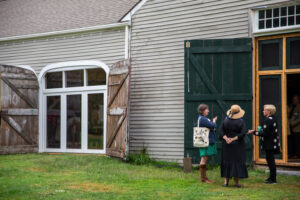This Thursday, August 14, is the 90th anniversary of Social Security becoming a cornerstone of economic stability for millions of American families. On that date in 1935, President Franklin Roosevelt signed the landmark law creating an innovative program to protect senior citizens, widows, and dependent children from what he called “the hazards and vicissitudes of life.”
Historians credit Roosevelt’s Secretary of Labor, Frances Perkins, with being the “Architect of Social Security.” Perkins, the first female member of any president’s cabinet, was an outspoken advocate for the innovative program. Behind the scenes, she was also a key operative crafting the strategy that won Congressional passage. Her vision, leadership, and tenacity remain relevant today – nine decades later.
As a social worker, Perkins had direct experience with the challenges faced by many Americans. The U.S. was still dealing with the depths of the Great Depression. Unemployment had soared to nearly one quarter of the workforce. Very few displaced workers received benefits. Widows and their children had little choice other than factory work for economic survival. The small number of programs for the elderly often were poorly run and underfunded.
In a message to Congress, Roosevelt declared his goal was to place “the security of the men, women and children of the Nation first.” He named Perkins to chair a new Committee on Economic Security tasked with recommending legislation to combat these problems.
The Perkins’ committee’s proposal became the framework for the bill sent to Congress. It included safeguards against unemployment, financial support for the elderly, aid to disabled workers, and assistance to families of deceased breadwinners. Perkins explained, “We have come to learn that the large majority of our citizens must have protection against the loss of income due to unemployment, old age, death of the breadwinners and disabling accident and illness, not only on humanitarian grounds, but in the interest of our National welfare.”
For Perkins, Social Security was more than a stopgap plan to deal with the Depression. “We cannot be satisfied merely with makeshift arrangements which will tide us over the present emergencies,” she said. “We must devise plans that will not merely alleviate the ills of today, but will prevent, as far as it is humanly possible to do so, their recurrence in the future.”
In a national radio address shortly after Social Security was signed into law, Perkins declared that it would become “the most useful and fundamental single piece of Federal legislation in the interest of wage earners in the United States.”
Perkins’ statement has stood the test of time. Social Security’s programs now aid nearly 75 million individuals. Challenges currently confronting many Americans — such as rising economic inequality, threats to workers’ rights, and the erosion of other “safety net” programs – continue to resonate with the issues she led the nation to address nine decades ago.
Frances Perkins’ vision should not only be a fond historic memory, but a blueprint for future progress.



